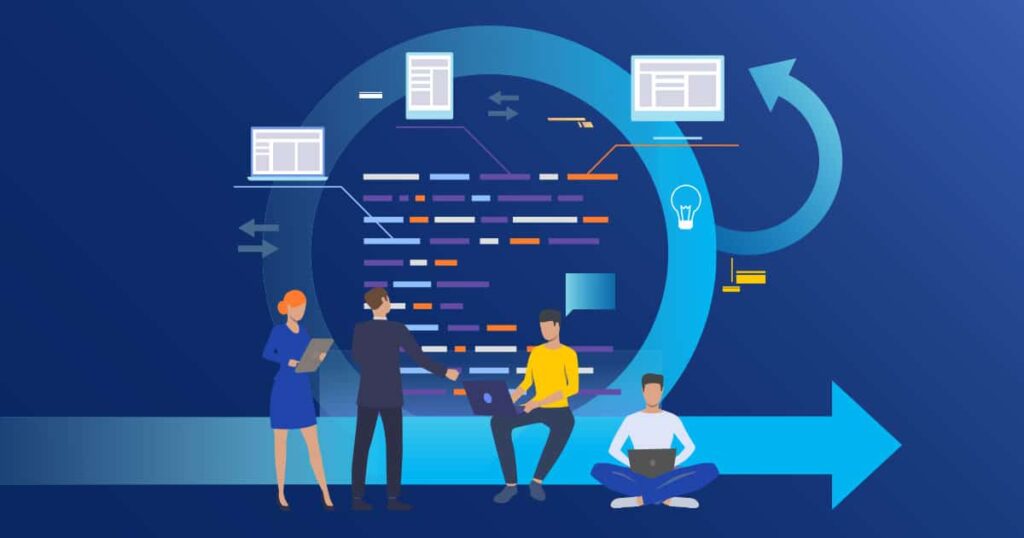
It is not a surprise to know that about 82% of the commercial and corporate workload is moving towards cloud-based servers worldwide. With a significant portion of the business moving towards remote working, you must look at your technological prospects and move towards a networking spectrum that facilitates superior accessibility. Hosted desktops have been established for this very reason.
A reliable hosted desktop provider hosts a cloud-based virtual desktop that can be accessed on any device with the software and internet. The great debate between virtualization and conventional desktops has crept up the internet- so a clear understanding between the features and benefits they bring to the table is vital. Desktops hosted in a virtualized infrastructure can be accessed with ease of flexibility and lowered cost. It offers a wide range of scalability features that no conventional desktop can replace. Let’s take a deeper dive into the world of hosted desktops:

-
Table of Contents
Customizability & Quality Operations
An expertly managed IT service in the UK can provide professional outsourcing services for a broad range of IT aspects, providing a reliable consultation-based approach to serving clients via hosted desktops. They provide a personalized hosted desktop service made to suit the client’s requirements, expanding over a multitude of industries, including retail, service, manufacturing, research, and education.
You can focus on your core operations while they bring a comprehensive range of support services from specialist IT professionals and expert teams. They provide outsourcing facilities, including system provision, help-desk, retail, maintenance and recovery, repair, and optimized efficiency.
They ensure they keep a keen eye on flexibility, providing cloud-based hosted desktop services where your staff can access applications on a static or dynamic basis. They enhance and build long-term relationships and ensure they provide maximum flexibility to grow and scale the business.

-
Freedom From Desktop Lifecycle
A real desktop is an asset to the business, and all assets have an expected useful lifetime over which they can be used effectively and efficiently. They depreciate over time and usage and cannot be adapted for extensive features and dynamic settings. They have a fixed lifecycle, after which they call for high maintenance and replacement costs.
Their lifecycle starts from purchases from the vendor and requires a careful analysis of their specs and adaptability to the business’s operational requirements. After procurement and deployment, these desktops require regular maintenance and management, which can vary according to their durability and performance levels. Malfunctions and hardware problems are bound to come up at some point in the life of a physical desktop, and then it can call for replacement. It is a systematic process that occupies a significant portion of the budget. This is not an issue with virtual desktops.
No physical presence calls for low maintenance and repair costs that are no longer in your hands. Hosted desktops are hosted on a virtual network by your reliable provider, and hardware malfunctions are no longer a problem. There is no life cycle as it is a cloud-based setup hosted and managed by your service provider while your staff works seamlessly on the desktop. It does not require replacement costs and is flexible to upgrades and scalability features in the system.
-
Ultimate Mobility & Flexibility
Handling physical PCs in the comfort of your own home is an extremely difficult challenge, especially in the post-COVID-19 scenario where remote working has become the most preferred mode of work. With physical desktops, one cannot use the software provided in the organization’s PC on your PC. Hosted desktops can break this lack of mobility and provide flexibility in accessing data on any device with the internet.
As they are operated on the cloud, logging in to any device connected to the internet is just a matter of logging in to any device. Employees need not sacrifice their work when they cannot come to the office for certain reasons because now they can work from home, take frequent breaks, and complete the task on the hosted desktop service provided by the server.
With the internet, you can access your work desktop, which has saved wallpapers, settings, files, and other crucial data. Remote working prospects have ensured low employee absenteeism and enhanced productivity even during leaves. It results in optimized utilization of time while also striking a work-life balance.

-
Cost-Effectiveness
An increase in costs is every business’s worst nightmare, and businesses are constantly trying to look for opportunities and access better technology to reduce costs and improve productivity at the same time. Physical desktops have decreased the chances of reducing dents in the budget because they are physical assets that depreciate over time, demand high maintenance costs, and require replacement every few years.
Data is the 21st century’s new oil, and cloud-based storage has provided an environment that can be cost-effectively managed and operated upon. Hosted desktops are extremely budget-friendly when compared to physical desktops- especially because there are no costs of hardware, setup, power, cooling, network management, repair, maintenance, and replacements.
Regarding third-party data centers and hosted networks, the hardware, hosting, maintenance, and networking are outsourced to a reliable supplier. As such, virtual desktop service can help you reduce capitalized and operational expenses.

-
Enhanced Cyber Security
Another aspect to remember while choosing hosted desktops over traditional ones is the aspect of security. Security is a huge concern when it comes to physical and hosted desktops alike. One must invest in proper security and compliance measures in the case of physical desktops, where the data stored is susceptible to physical damage, human intervention and accident, amendment, and other forms of data loss.
Cyber security criminals can easily access and leverage their crimes on a physical desktop rather than one accessible on cloud servers. Physical desktop protection requires installing and subscribing to premium antivirus software, firewalls, and authentication. This security aspect can be taken care of when partnered with a reliable service provider.
Competent providers implement security measures, including multi-factor authentication, IDS & IPS, premium firewalls, data encryption, complex decryption, and more. Data stored in the cloud is secure from cyber and physical attacks, regardless of the state of your physical PC.

Conclusion
Virtual desktops are the future; they come with many enterprise-grade benefits and leveraging opportunities, and they also beat traditional desktops in the ways mentioned above. Managing and provisioning desktops have become a tedious and expensive task; virtual desktops have given a new definition of instant work.
Although they come with disadvantages, they can be avoided by partnering with service providers who provide these services for low cost and high-security measures. It provides a secure environment for your business to flourish with success. Leveraging and expanding your horizons by evolving your technology bandwidth is good.







